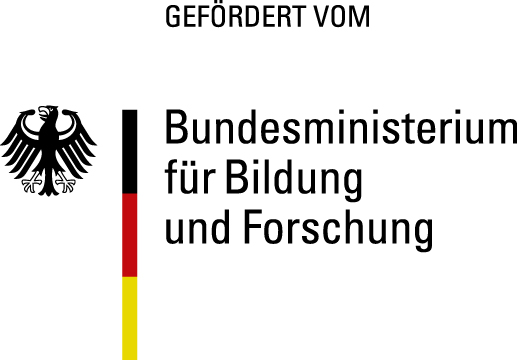
|
Funding measure of the Federal Ministry of Education and Research "Efficient high-performance laser beam sources" (EffiLAS)
Joint research project "Effiziente und brillante Breitstreifendiodenlaser mit hohen Leistungen für den Betrieb bei hohen Umgebungstemperaturen" (HotLas) |
Subproject "Dynamical modeling and simulation of broad-area lasers at high-temperature operation conditions"
(subcontracted by the Ferdinand-Braun-Institut Leibniz-Institut für Höchstfrequenztechnik (FBH) Berlin in the frame of the joint research project)Head of subproject
| Dr. Mindaugas Radziunas | (WIAS, Research group Laser Dynamics) |
Project status
| WIAS Main application area | Nano- and Optoelectronics |
Overview
-
High-power high-brilliance semiconductor lasers operating at high-temperature regimes
are very useful devices for many applications. Currently, most high-power high-efficiency
lasers either have an insufficient brilliance or need an extra cooling. Therefore,
optimization of existing lasers operating at high (~50°C)
temperatures or creation of new laser design concepts is a required task for modern applications.
Furthermore, we plan to develop a new approach for narrowing of the lateral
beam divergence (<10°). The achieved narrowing of the emission angle should allow doubling of the beam
brilliance available in the modern diode lasers.
Modeling, simulations and optimization of broad area diode lasers under the influence of self-heating and current spreading is the main topic of our research within this project. The current spreading and, especially, the self-heating of diode lasers cause changes of the optical waveguide properties within the devices. We shall implement newly derived electro-thermal models into the advanced software package BALaser used for simulation of the laser dynamics in high-power broad-area semiconductor lasers. We shall use an appropriately updated version of this software tool for simulations of different broad area laser designs. Due to the very different time scales (ps-scale for optical fields, ns-scale for carrier densities, and µs-scale for temperature), and due to the huge computational load when integrating numerically model equations, the implementation of the thermal model should be done parametrically. Namely, the refractive index and the other laser parameters should be represented as functions of the precomputed temperature distribution.
The main aims of the subproject are optimization simulations of various high-power high-brilliance broad-area diode lasers operating at high-temperature (~50°C) regimes. That is, for each considered laser layout we should find the geometry and material parameters that have the greatest impact on the emission quality and identify the reliable limits for these parameters allowing stable ~20 W emission with less than 8° lateral divergence angle.
Related works and software
- BALaser: a software tool for simulation of dynamics in Broad Area semiconductor Lasers.
- M. Spreemann, M. Lichtner, M. Radziunas, U. Bandelow, H. Wenzel, ''Measurement and Simulation of Distributed-Feedback Tapered Master-Oscillators Power-Amplifiers'', IEEE J. of Quantum Electronics 45(6), pp. 609-616, 2009.
- M. Radziunas, R. Čiegis, ''Effective Numerical Algorithm for Simulations of Beam Stabilization in Broad Area Semiconductor Lasers and Amplifiers'', Math. Model. Anal. 19(5), pp. 627-646, 2014.
- M. Radziunas, ''Modeling and simulations of edge-emitting broad-area semiconductor lasers and amplifiers'', In R. Wyrzykowski et al.(Eds.), PPAM 2015, Part II, LNCS 9574, pp. 269-276, Springer, 2016. ISBN: 978-3-319-32151-6.
- M. Radziunas, R. Herrero, M. Botey, and K. Staliunas, ''Far field narrowing in spatially modulated broad area edge-emitting semiconductor amplifiers'', J. Opt. Soc. Am. B, 32(5), pp. 993-1000, 2015. WIAS-Preprint, (2088).
- M. Radziunas, M. Botey, R. Herrero, K. Staliunas, ''Intrinsic beam shaping mechanism in spatially modulated broad area semiconductor amplifiers'', Appl. Phys. Lett. 103(13), 132101, 2013. WIAS-Preprint (1790).
Page created and maintained by Mindaugas Radziunas. Last update on September 26, 2016.


